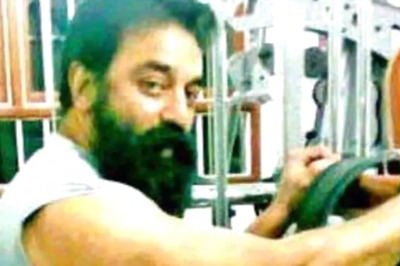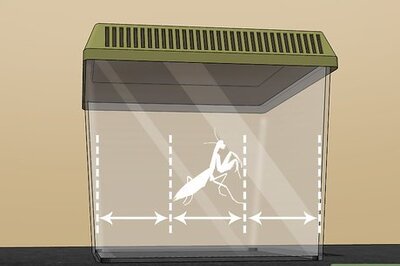
views
When he was found in April, 2012, Sahebrao was on the verge of dying. Its paw was caught in a steel trap and its kidneys were giving up. Sahebrao, Asia's largest tigerin captivity, was rescued, but the injury in his paw agonised him for a long time until a team of international surgeons’ efforts relieved him of the pain.
Sahebrao was two when he and his brother were caught in a poacher’s steel trap in Gondamahadi outside Tadoba-Andhari Tiger Reserve (TATR). His brother died, while Sahebrao, now eight-year-old, suffered major injuries. The tiger was taken to Maharashtra Animal and Fisheries Science University (MAFSU) for treatment. By the time the massive tiger – reputed to be the largest of its species in captivity across Asia – reached the centre, the left paw had become gangrenous and an amputation was immediately done.
On December 12, he was transferred to Maharajabagh zoo and then to Gorewada rescue centre in Nagpur on June 1, 2016. Over the years, Sahebrao gained the reputation of an ‘ill-tempered’ and ‘aggressive’ animal, growling menacingly whenever humans approached him. What no one realized in these six years was that this aggression stemmed from the constant pain that the amputation had left him with.
The cause: a neuroma or a growth on the nerve tissue, often referred to as a pinched nerve that leads to pain and nonunion – a permanent failure of healing as a result of the amputation. Moreover, the two middle toes that were amputated are most important for a tiger to be able to support its immense weight, in the case of Sahebrao, more than 200 kilograms.
It wasn’t until Dr. Sushrut Babhulkar, a Nagpur-based orthopaedic surgeon who specializes in joint reconstruction surgery, arrived at the centre and saw the limping big cat that the diagnosis was made.
“It started with a forest guard’s brother breaking his leg. While treating him, I learnt about Sahebrao, the biggest male tiger in all of Asia. I was curious and wanted to see him."
The way Babhulkar tells the story of Sahebrao’s diagnosis and treatment, it seems like the tiger attempted to communicate his ordeal to the doctor.
“When he turned towards us, his gaze was piercing. He suddenly walked towards us and those with me were frightened and ran away because of his aggressive reputation. He came to me, limping, hopping and growling throughout. Then he stood near me and extended his left paw towards me. I saw that it was partially amputated and I realized that he was in pain."
Babhulkar adopted the tiger and donated Rs 2 lakhs under a scheme by the Maharashtra government to take care of it. “But it wasn’t enough that the tiger was alive, we wanted to ensure that its quality of life also improved."
In February, Babhulkar began talking to veterinarians in the US and UK about the possibility of the tiger being fitted with a prosthetic paw. On Sunday, the procedure began with X-rays being taken to understand the extent of injury and also to design the model for the prosthetic limbs.
“After X-ray, a surgery will take place to remove any swollen nerves or bones that are misaligned and are leading to the constant pain in the tiger. This will take place by December. After this we will wait for six months for healing to take place. Meanwhile, we will also monitor Sahebrao closely," said an official.
The next challenge, officials explained, would be to decide the exact type of prosthesis which can be used while figuring out how it can be attached and finally, to ensure that Sahebrao learns to use it.
“The doctors will conduct a CT scan to help doctors figure out what kind of will be apt. There are a few options, for instance it could be attached to his left leg and something slightly larger that would work like a large slipper," said the official.
Babhulkar added that with no precedent for a surgery of the sort, the process was being aided by three major international agencies — Pathway Hospital of Arizona, considered best in fixing bones in animals; A V Foundation, a group of veterinary surgeons based in Switzerland who pioneer in experimenting with using artificial prosthesis technique in animals before it was first used in humans decades ago; and the University of Leeds.
“We are constantly exchanging notes and findings with each other on a WhatsApp group. The X-rays have also been put on it along with the clinical data about his limb. If this is accomplished, we should be able to try and get an artificial limb that will hopefully be able to live the rest of his life without a limp," the doctor added.




















Comments
0 comment